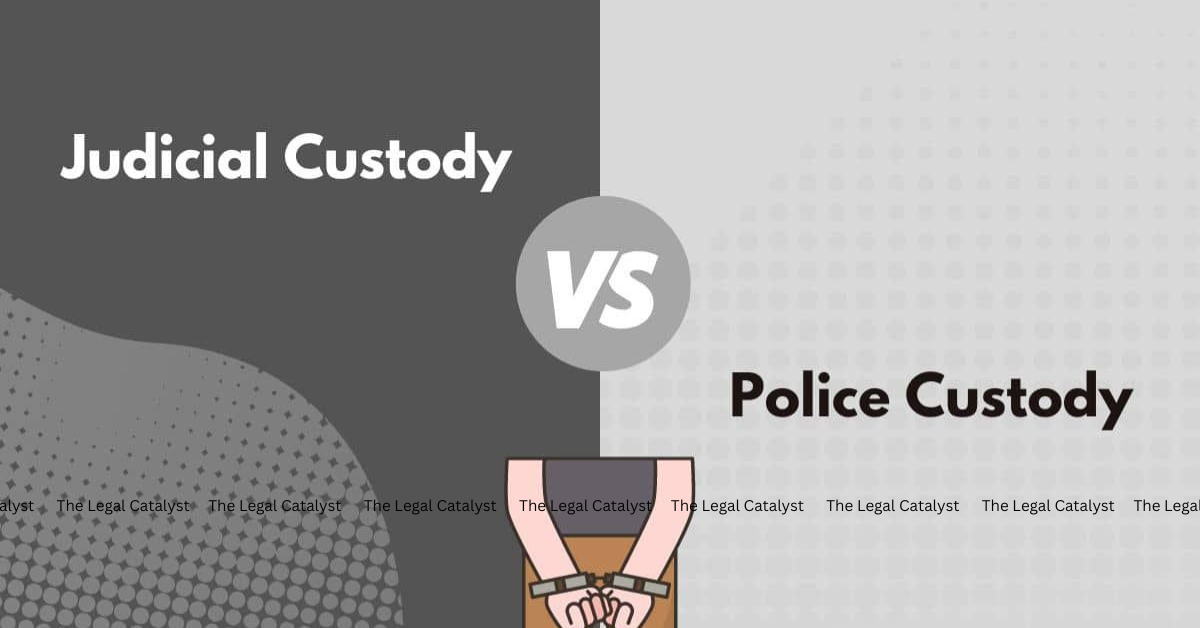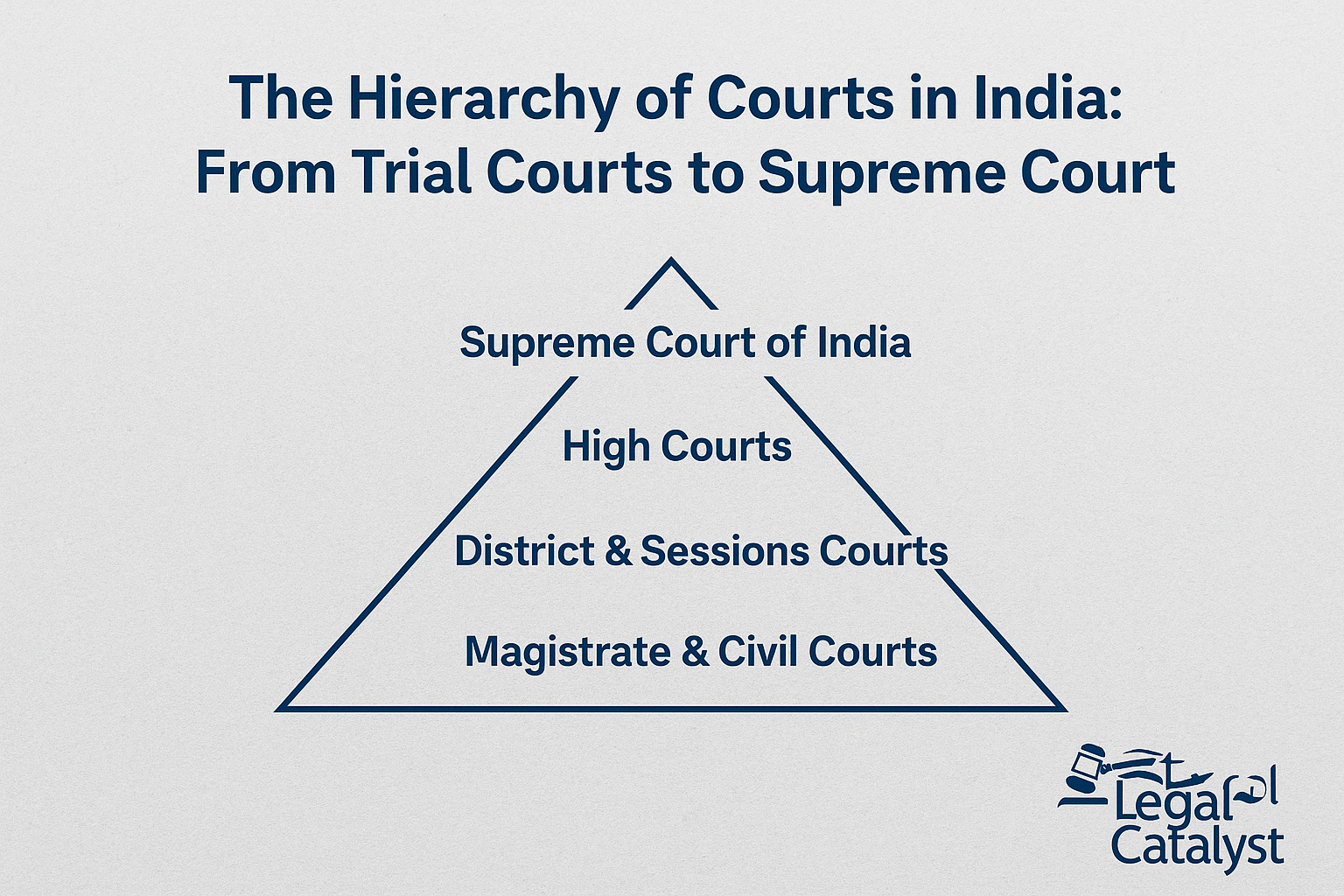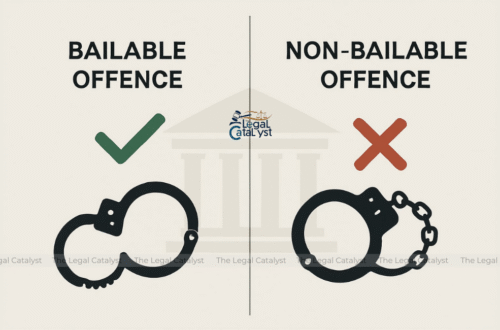Table of Contents
- Introduction
- What is Police Custody?
- What is Judicial Custody?
- Police Custody vs Judicial Custody: Key Differences
- Legal Provisions Under CrPC & BNSS
- Rights of the Accused in Custody
- Recent Cases & Examples
- Conclusion
Introduction
The Indian legal system distinguishes between police custody and judicial custody, both of which play critical roles in the criminal justice process. If you or someone you know is ever arrested, knowing the difference between police and judicial custody can help protect legal rights and prevent abuse.
This guide explains what each custody type means, how long they can last, and your rights as an accused under Indian law.
What is Police Custody?
Police custody means the accused is physically held by the police during the initial investigation of the case.
🔍 Key Points:
- Happens after arrest and before the first court hearing
- Accused is usually kept in a police lock-up
- Police can interrogate the accused
- Maximum duration: 15 days (Section 167 CrPC / 187 BNSS)
- Requires court approval for any extension
Purpose: To allow the police to gather evidence, conduct recovery, or question the accused.
What is Judicial Custody?
Judicial custody means the accused is sent to jail (prison), under the authority of the magistrate—not the police.
🔍 Key Points:
- Accused is kept in judicial jail, not in police lock-up
- Police lose direct access for interrogation (unless court allows)
- Can be extended in 15-day blocks up to 90 days (for serious offences)
- Comes into play after initial police custody or directly by the court
Purpose: To prevent tampering with evidence or influencing witnesses when investigation doesn’t need further police questioning.
Police Custody vs Judicial Custody: Key Differences
| Feature | Police Custody | Judicial Custody |
|---|---|---|
| Authority | Police | Magistrate |
| Place of Detention | Police lock-up | Judicial jail (prison) |
| Interrogation | Allowed | Restricted |
| Maximum Duration | 15 days | Up to 90/60 days (based on crime) |
| Court Approval | Needed for extension | Mandatory for remand |
| Legal Access | Limited | Greater access to legal aid |
Understanding this distinction is crucial for securing bail, legal aid, or anticipatory legal strategies.
Legal Provisions Under CrPC & BNSS
- CrPC Sections 167, 57: Detailing procedures for custody
- BNSS Section 187: Updated guidelines for detention periods
- D.K. Basu v. State of West Bengal (1997): Landmark Supreme Court case establishing custody safeguards
Read the full CrPC provisions.
Rights of the Accused in Custody
Whether in police or judicial custody, an accused has legal protections:
✅ Right to remain silent
✅ Right to meet a lawyer
✅ Right to be produced before a magistrate within 24 hours
✅ Right to medical examination
✅ No torture or third-degree allowed
Violation of these rights can lead to disciplinary action against officers and legal remedies for the accused.
Also Read- Right to Legal Aid in India
Recent Cases & Examples
🔹 In the 2023 Delhi hit-and-run case, the accused was first sent to police custody for vehicle recovery and later to judicial custody pending trial.
🔹 In many POCSO and UAPA cases, prolonged judicial custody is granted due to the complexity of the investigation, even when the police don’t require further interrogation.
🔹 The Supreme Court has repeatedly emphasized that custody is not punishment, and both forms must respect constitutional freedoms.
Conclusion
The difference between police custody vs judicial custody in India isn’t just procedural—it can dramatically affect an accused person’s rights, safety, and access to legal support.
Understanding these terms helps ensure you or someone else gets timely legal aid, medical help, and protection against custodial abuse. As reforms continue under the BNSS 2023, awareness is your first defense.
If someone is arrested, remember: ask where they are being kept and under whose authority—that tells you what kind of custody they are in and what rights apply.
Also Read






